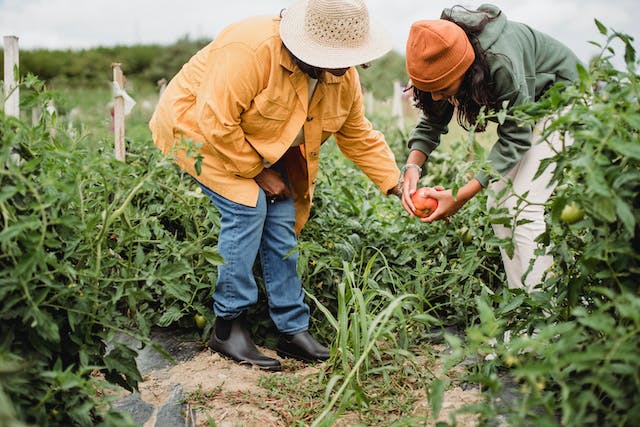
Defending the Bounty: A Guide to Effective Pest and Disease Control in Crop Production
Imagine a vibrant field, rows of healthy crops swaying in the breeze, their promise of bountiful harvests brimming with life. But lurking in the shadows, unseen threats wage war: pests and diseases, hungry for the fruits of your labor. To protect your crops and secure your harvest, you need to become a master of defense, wielding knowledge and strategy to safeguard your precious bounty.
Understanding the Enemy: Identifying Pests and Diseases
The first step in effective pest and disease control is knowing your enemy. Familiarize yourself with common pests and diseases affecting your crops in your region. Look for signs of their presence, such as:
- Pests: Chewed leaves, damaged fruits, unusual insect activity, or webbing on plants.
- Diseases: Discoloration, wilting, stunted growth, or fungal growth on leaves and fruits.
Once identified, research the specific pest or disease, understanding its life cycle, preferred habitat, and vulnerabilities. This knowledge is crucial for choosing the most effective control methods.
A Diverse Arsenal: Choosing the Right Weapons
Like a warrior choosing their weapons, you have a diverse arsenal at your disposal:
- Prevention: The best defense is a good offense. Practice good sanitation, rotate crops, plant resistant varieties, and attract beneficial insects like ladybugs to create a healthy ecosystem that discourages pests and diseases.
- Mechanical control: Handpicking pests, setting traps, or using physical barriers like row covers can be effective for small infestations.
- Organic control: Neem oil, insecticidal soap, and other natural products offer eco-friendly options for pest control.
- Biological control: Introducing beneficial insects or microorganisms that prey on pests or suppress diseases can be a long-term solution.
- Chemical control: While pesticides can be effective in severe cases, they should be used as a last resort due to potential environmental and health risks. Always follow label instructions carefully and prioritize integrated pest management (IPM) strategies.
Scouting and Monitoring: Always Vigilant
Constant vigilance is key. Regularly inspect your crops, looking for signs of trouble. Early detection allows for swift action and prevents outbreaks from spiraling out of control. Keep records of pest and disease occurrences to identify patterns and inform future strategies.
Building a Sustainable Future: Beyond the Quick Fix
Effective pest and disease control isn’t just about immediate solutions. It’s about building a resilient ecosystem and fostering a healthy soil environment. These sustainable practices play a crucial role:
- Building soil health: Healthy soil rich in organic matter fosters beneficial microbes and suppresses harmful pathogens.
- Promoting biodiversity: Creating a diverse ecosystem with a variety of plants and wildlife attracts beneficial insects and predators, reducing pest pressure.
- Crop rotation: Rotating crops disrupts the life cycle of pests and diseases specific to certain crops.
- Cover cropping: Planting cover crops between main crops suppresses weeds, adds nitrogen to the soil, and attracts beneficial insects.
By embracing these principles, we can move beyond quick fixes and build a future where our crops thrive in harmony with the environment, naturally resisting pests and diseases.
Remember, defending your crops is a continuous battle, an ongoing dance with nature’s challenges. But with knowledge, vigilance, and a commitment to sustainable practices, you can ensure your fields remain vibrant battlegrounds, where resilience and ingenuity secure the bounty of future harvests. So, sharpen your tools, embrace the challenge, and become a champion of your crops, forever guarding the seeds of abundance!